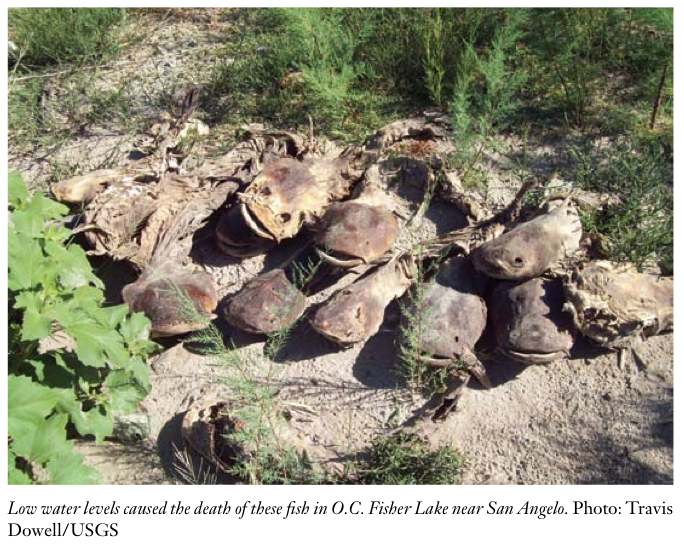ENVIRONMENT TEXAS
Introduction
Texans know what a precious resource water is. During the drought that started in 2011, citizens responded to the water shortage by curtailing their water use. They abided by outdoor watering restrictions, watching lawns and landscapes wither and 5.6 million urban trees die due to lack of water. In Midland, outdoor watering use was restricted to just two hours per week by hand. To reduce other water use, the city increased rates five-fold for the biggest water users.
Yet many of the ways in which we consume water are wasteful. Practices, habits and infrastructure that predate Texas’ drought waste billions of gallons of water each year.
Power companies have continued to use and consume billions of gallons of water for cooling instead of investing in technologies that use less water. Aging municipal water systems leak billions of gallons of water. Most companies that engage in fracking to extract natural gas continue to discard water by injecting water mixed with toxic chemicals underground—never to be used again—after a single use instead of processing it for reuse.
There’s no need for continued water waste. In every sector of water use, new technologies and better management practices can enable us to get more out of a gallon of water. Farmers can grow the same crops with the same yields by choosing more efficient irrigation systems and applying water exactly when it provides the greatest benefit. The state can promote technologies—such as wind and solar power and energy efficiency—that consume no water. Any new fossil fuel power plants can be designed with air cooling systems. Recycling and treatment technologies allow fracking companies to recycle some of the water they use, while use of brackish water unsuitable for drinking or irrigation could eliminate freshwater use in drilling altogether.
Adoption of these new technologies and practices will be more widespread and rapid if Texas develops policies and incentives to reduce water use.
As Texas responds to the ongoing drought and plans how to meet the state’s water needs in the years to come, it needs to pursue a balanced solution that improves the efficiency of water use and leaves more water in rivers and aquifers to support the ecosystems that depend on water.
We can’t control when it rains, but we can control how we use water.
Water Waste Is Harming Texas
The availability of water affects the well-being of Texas communities and wildlife. In the past two years, drought has constrained this valuable resource. Wasteful water use makes the situation worse.
Drought Damage in Texas
During the summer of 2011, Texas was hit by the worst single-year drought in its history, with 97 percent of the state in extreme or exceptional drought. The situation has improved little—nearly 90 percent of Texas continued to experience drought as of early 2013. West Texas, for example, has continued to be in extreme drought with low rainfall.
Texas rivers—from the Guadalupe to the San Marcos to the Colorado—are stressed by this ongoing drought. Low water levels threaten wildlife, strain drinking water supplies, and disrupt outdoor recreational activities.
There are 191,000 miles of rivers and streams in Texas, which provide habitat for fish and support diverse ecosystems. These ecosystems become threatened when rivers dry out, when lake and groundwater levels drop, or when the lack of rainfall increases water salinity or leads to lower levels of dissolved oxygen in waterways. At the height of the drought in 2011, at least seven of Texas’ reservoirs were empty. Even in 2012, the ongoing drought continued to leave water levels in lakes and streams far below their capacity. For example, as of early 2013 Lake Travis and Lake Buchanan, two of Texas’ major reservoirs, were at 41 percent of capacity.
Read full report (PDF) here: Keeping Water in Our Rivers
About Environment Texas
www.environmenttexas.org
“Environment Texas is a statewide, citizen-based environmental advocacy organization. We believe there’s something special about Texas — something worth protecting and preserving for future generations. Whether it’s swimming at Barton Springs on a hot day, paddling down the Trinity River or hiking through Big Bend National Park, Texas’ natural wonders enrich our lives in countless ways.”
Tags: Environment Texas







 RSS Feed
RSS Feed